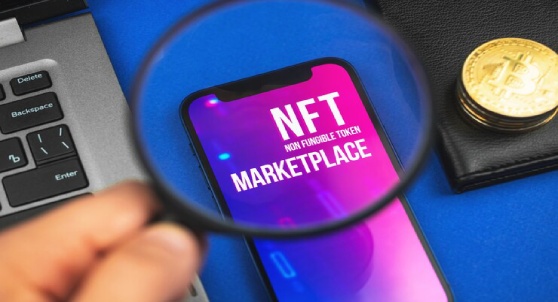-
🚀 TL;DR: Cross-chain NFT marketplaces are the next evolution in Web3. They allow users to mint, trade, and move NFTs across multiple blockchains seamlessly. This guide explores how they work, the tech powering them (bridges, oracles, smart contracts), key examples, and the real-world impact.
Why Cross-Chain Marketplaces Matter
Ever tried listing your NFT on another blockchain—only to realize you're stuck?
Most NFT marketplaces are siloed. Without complicated wrapping or bridging, your ETH-minted NFT can't be listed or traded on Polygon or BNB Chain.Cross-chain NFT marketplaces solve this.
They let users mint, move, and trade NFTs across different blockchain ecosystems—expanding access, liquidity, and usability.What Is a Cross-Chain NFT Marketplace?
A cross-chain NFT marketplace is a platform that supports NFT activity across multiple blockchain networks—Ethereum, Polygon, Avalanche, BNB Chain, etc.
Instead of being limited to one blockchain, users can:
- List NFTs from one chain on another
- Move NFTs across chains while preserving metadata and ownership
- Access broader audiences and liquidity
Also, Discover | Cross Chain Asset Transfers Using Axelar
How Do They Work?
Cross-chain functionality relies on interoperability protocols that allow blockchains to “talk” to each other securely. Here are the core components:
Cross-Chain Bridges
Bridges lock NFTs on the source chain and mint a wrapped version on the destination chain.
Relayers + Oracles
Relayers listen for events (like an NFT lock) and notify the destination chain. Oracles validate and ensure data integrity between chains.
General Message Passing (GMP)
Protocols like Axelar and LayerZero enable smart contracts on one chain to trigger logic on another—essential for multi-chain NFT marketplaces.
Atomic Swaps
Used to ensure NFT/token exchanges across chains happen simultaneously or not at all—no counterparty risk.
SPV (Simplified Payment Verification)
Lightweight verification that confirms ownership across chains without downloading the full chain history.
Key Benefits
Interoperability
Breaks blockchain silos—list and trade assets cross-chain.Liquidity
More users = more trades = healthier market.24/7 Accessibility
Users from any chain can access your listings.Multi-Token Support
Trade NFTs using ETH, BNB, MATIC, etc.Scalability
Traffic can be distributed across multiple chains, reducing gas congestion.Also, Explore | Building a Cross-Chain NFT Bridge using Solana Wormhole
Real-World Examples
AxelarSea
A marketplace built on Axelar's GMP that lets users trade NFTs across chains like Ethereum and Avalanche with a single wallet.
MetaNFT
Supports cross-chain NFT minting and listing across Ethereum, Polygon, and BNB Chain—helping creators reach wider audiences.
Moonbeam + Polkadot (XCM)
Supports substrate-based cross-chain NFT interactions using Cross-Consensus Messaging (XCM).
You may also like | Creating Cross-Chain Smart Contracts with Polkadot and Substrate
Challenges Still Exist
Security Risks
Bridges and oracles are common targets—multiple hacks (Ronin, Harmony) prove the need for better designs.Regulatory Ambiguity
Jurisdictional control over assets that span multiple blockchains is still fuzzy.Custody Concerns
Tokenized real-world assets need legal custody frameworks to back their value.Lack of Standards
Royalty enforcement, metadata storage, and asset verification need unified protocols (e.g., ERC-4907, EIP-2981).The Hybrid Future of NFTs
This isn't about DeFi replacing TradFi—it's about enhancing it.
Big players like BlackRock, Nike, and Franklin Templeton are already experimenting with tokenization and Web3 integrations.Cross-chain NFT marketplaces could be the key to:
- Bringing institutional trust into NFTs
- Creating global NFT liquidity hubs
- Unlocking real-world asset tokenization
Final Thoughts
Cross-chain NFT marketplaces are not just a “next-gen” idea—they're already reshaping how NFTs are built, traded, and understood.
These platforms offer the foundation for a more open, efficient, and inclusive digital asset economy by solving liquidity fragmentation and enabling chain-agnostic NFT utility.
Thinking of building one? Start with solid interoperability frameworks—and build for real users, not just the hype. Looking for NFT developers who can bring your vision to reality?
Connect with our skilled NFT marketplace developers to get started.

Our Offices
INDIA
Emaar Digital Greens, Sector 61,
Gurugram, Haryana
122011.
Welldone Tech Park,
Sector 48, Sohna road,
Gurugram, Haryana
122018.















